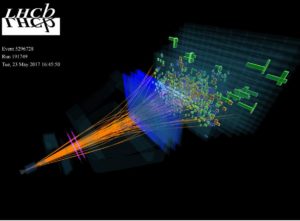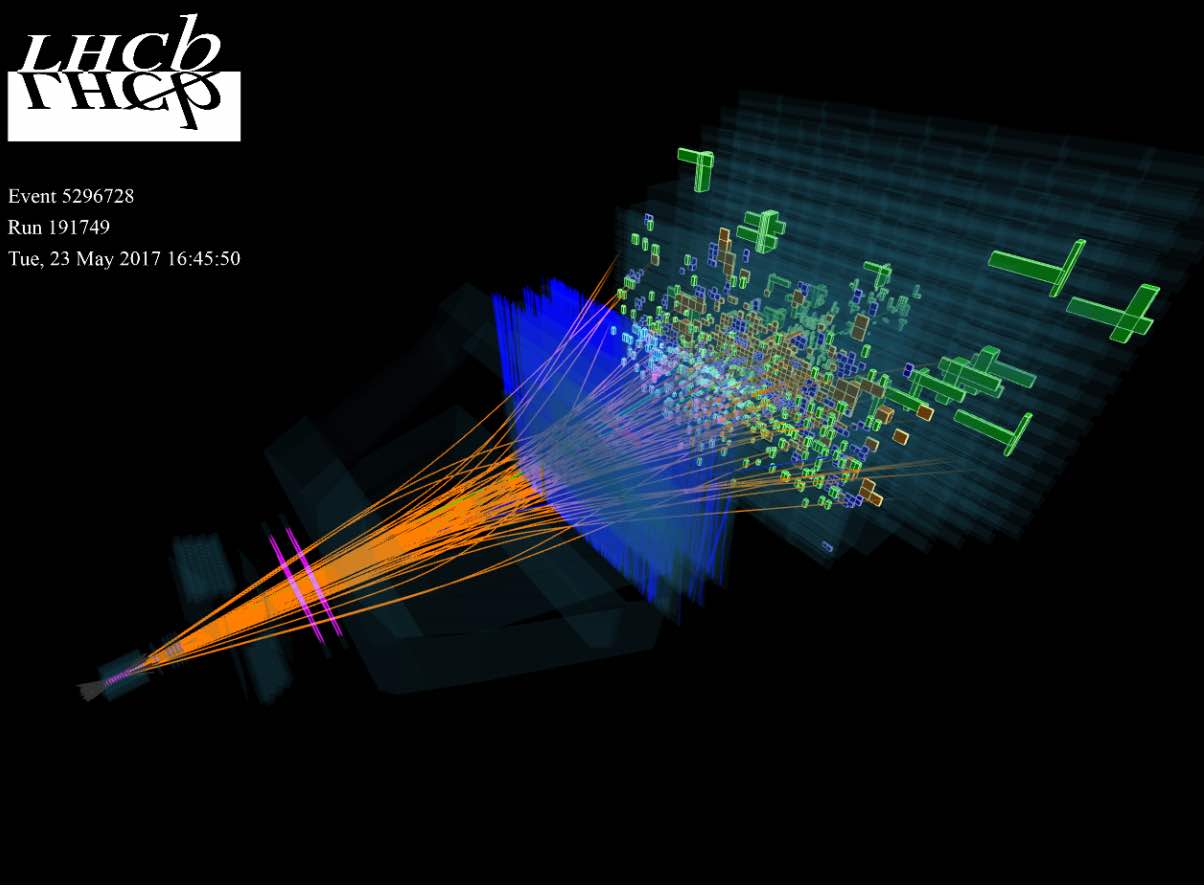 EPFL’s physicists are moving forward in their efforts to solve the mysteries of the universe. A particle detector made up of 10,000 kilometers of scintillating fiber is under construction and will be added onto CERN’s particle accelerator.
EPFL’s physicists are moving forward in their efforts to solve the mysteries of the universe. A particle detector made up of 10,000 kilometers of scintillating fiber is under construction and will be added onto CERN’s particle accelerator.
The Large Hadron Collider (LHC) at CERN, the European Organization for Nuclear Research, produces hundreds of millions of proton collisions per second. But researchers working on the Large Hadron Collider beauty (LHCb) experiment, which involves physicists from EPFL, can only record 2,000 of those collisions, using one of the detectors installed on the accelerator. So in the end, this technological marvel leaves the physicists wanting more. They are convinced that the vast volume of uncaptured data holds the answers to several unresolved questions.
In elementary particle physics, the Standard Model – the theory that best describes phenomena in this field – has been well and truly tried and tested, yet the researchers know that the puzzle is not complete. That’s why they are looking for phenomena that are not accounted for by the Standard Model. This quest for “new physics” could explain the disappearance of antimatter after the Big Bang and the nature of the dark matter that, although it represents around 30% of the universe, can only be detected by astronomical measurements at this point.
To extract more information from the LHC data, we need new technologies for our LHCb detector,” says Aurelio Bay from EPFL’s Laboratory for High Energy Physics. EPFL has teamed up with several research institutes to develop the new equipment that will upgrade the experiment in 2020.
Using scintillating fiber to detect particles
After five years of work, EPFL’s physicists, together with some 800 international researchers involved in the LHCb project, have just taken an important preliminary step towards significantly enhancing their experimental equipment. They have decided to build a new detector – a scintillating fiber tracker dubbed SciFi.
Construction of the tracker, which incorporates 10,000 kilometers of scintillating fibers each with a diameter of 0.25mm, has already begun. When particles travel through them, the fibers will give off light signals that will be picked up by light-amplifying diodes. The scintillating fibers will be arranged in three panels measuring five by six meters, installed behind a magnet, where the particles exit the LHC accelerator collision point. The particles will pass through several of these fiber ‘mats’ and deposit part of their energy along the way, producing some photons of light that will then be turned into an electric signal.
Data on how the particles traverse the fibers will be enough to reconstruct their trajectory. The physicists will then use this information to restore their primitive physical state. “What we will essentially be doing is tracing these particles’ journey back to their starting point. This should give us some insight into what happened 14 billion years ago, before antimatter disappeared, leaving us with the matter we have today,” says Bay.
Huge data flows
SciFi is a key component for acquiring data at the highest speed, as it includes filters that are designed to preserve only useful data. In an ideal world, the physicists would collect and analyze all of the data without needing to use too many filters. But that would involve a massive amount of data.
We may already be at the limit, because we of course have to save the data somewhere. First we use magnetic storage and then we distribute the data on the LHC GRID, which includes machines in Italy, the Netherlands, Germany, Spain, at CERN, and in France and the UK. Many countries are taking part, and numerous studies on this data are being run simultaneously,” adds Bay. He points to his computer screen: red is used to denote programs that are not working well or those that have been trying for several days to be included among the priorities.
Bay neatly puts this initiative into a physicist’s perspective: “If the LHC doesn’t have enough energy to uncover new physics, it’s all over for my generation of physicists! We will have to come up with a new machine, for the next generation.”




